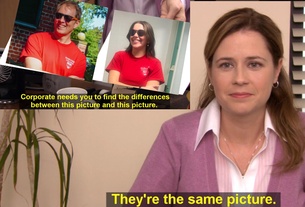{shortcode-68f5f5a2809d5b76c083eeb10b19320d9c7c93db}
During his tenure in the early 19th century, University President John T. Kirkland emphasized the independence of each Harvard school, famously saying, “it is our rule here for every tub to stand on its own bottom.” Yet the University’s current capital campaign, which will complete the first year of its public phase this fall, highlights an ongoing shift away from this 200-year-old philosophy as it applies to accruing resources and setting goals for Harvard’s various schools.
Today, the mission of “One Harvard” permeates campaign messaging, washing over centuries of difference. From promotional materials delivered to mailboxes around the world to pitches made to billionaires over cocktails, the notion of University cohesion through inter-school collaboration has dominated official campaign messaging and planning.
Though differences in cultures across schools persist and with them, the redundancies and particularities of a large, decentralized body, the $6.5 billion campaign considered to be Harvard’s first truly University-wide giving push has brought it closer than ever to acting as one University. And as campaign officials have mobilized to unify fundraising efforts and donors have contributed to multiple schools and cross-school initiatives, they have sown the seeds of physical structures and research ventures that have the potential to tie together long-independent pieces of the University for decades to come.
CROSSING OVER
Stemming from the ambitions of modern University leaders and the demands of a changing global landscape, the desire for increased University cohesion has gained traction across the Harvard community, manifested in the increased promotion and donor support of initiatives that cross school boundaries.
University President Drew G. Faust’s focus on the One Harvard mission, which she has championed since assuming the presidency in 2007, represents a culmination of a vision two decades in the making.
While leading Harvard’s last capital campaign in 1990s, then-University President Neil L. Rudenstine established a $40 million goal for a set of unprecedented inter-school endeavors, including the Mind, Brain, and Behavior research program. The initiatives ultimately failed to attract the donor support Rudenstine had hoped for, though, with the goal still unmet just six months before the end of the $2 billion fundraising effort.
Rudenstine’s successor, Lawrence H. Summers, was somewhat more successful after he moved to Massachusetts Hall in 2001. He galvanized support for cross-disciplinary efforts such as the Stem Cell Institute and pushed for centralization of donor databases across schools, resisting “bureaucratic Darwinism,” a term coined by Faculty of Arts and Sciences Dean William C. Kirby to describe inter-school competition for donors.
Summers’s appointee for the position of vice president of alumni affairs and development, Business School chief financial officer Donella M. Rapier, identified increased collaboration as a priority as Harvard prepared for its first truly-University wide campaign. “The plan is...not to say, ‘You get a smaller slice, we get a bigger slice.’ The whole pie expands,” she said in 2003.
When the financial crisis stymied ambitions for the Summers campaign, Faust—a vocal advocate of the One Harvard mission—moved to carry on the dreams of a more unified institution.
Faust replaced Rapier with Tamara E. Rogers ’74, the then-fundraising dean at the Radcliffe Institute for Advanced Study, where Faust herself had been dean before her presidency. Within months of her appointment, Rogers assembled a team devoted to fundraising for cross-school programs, and in an interview last spring, she said that her office has focused on increasing coordination to avoid duplication in donor outreach efforts. A web-based application launched by HUIT last fall allows Harvard’s 300 “frontline gift officers” to share notes and contact information for donors and minimize redundant communications.
The creation of University-wide priorities such as the Smith Campus Center, campus sustainability, and virtual education also illustrates increased collaboration. Rogers attributes the rise in multi-school efforts to Rudenstine’s campaign, which helped promote ideals of cohesion and collaboration.
{shortcode-41699c2528fc4124717802884e27f12ef12a2a50}
Donors have responded positively to these priorities throughout the quiet phase and first year of the campaign, public records show. Gifts have included a combined $250 million donation for the Wyss Institute for Biologically Inspired Engineering, a $40 million gift to be allocated for teaching and learning initiatives across the University, and an $80 million contribution for Harvard’s first-ever campus center—a stark contrast to the amounts raised during Rudenstine’s tenure.
Rice University President David W. Leebron ’76 said that the One Harvard mission resonated with him as a donor because he thinks that contemporary global issues call for interdisciplinary collaboration.
“What often sets apart somebody who is quite extraordinary is their ability to...look at problems from more than one perspective,” Leebron said, citing public health and climate change as examples.
“There is continuing and active effort to try and encourage joint gifts to donors who have interests that could be fulfilled by more than one school,” said Sidney R. Knafel ’52, a longtime donor who co-chairs the campaign for the Radcliffe Institute. “That will have a lasting impact on Harvard as an institution.”
LESS OF A TUB, MORE OF A POOL
In addition to funding inter-school initiatives, donors have also displayed support for the One Harvard vision by contributing to campaigns at different schools, regardless of degree affiliation.
According to Faust, alumni increasingly believe that invigorating parts of the University can strengthen Harvard as a whole, with many beginning to identify themselves “as citizens of the whole university, not just their school.”
For example, College and Business School alumni are directing campaigns at schools such as the Graduate School of Education, the Graduate School of Design, and the Divinity School that typically do not have alumni with the same level of financial means.
John K. F. Irving ’83, did not attend the Graduate School of Design but donated $10 million to the school last year and will co-chair its campaign. Irving, who said design has always piqued his interest, said that bolstering individual schools is essential to creating a “great university.”
“Every tub on its own bottom didn’t necessarily get all of the schools to the level that they should be at from a resources, profiling, or even a funding, or strategic point of view,” he said.
Similarly, although he attended the College and Business School, Knafel chairs the $70 million Radcliffe fundraising drive. The campaign is more than halfway to its goal, a fact that Knafel attributes to support from affiliates of other schools, such as FAS and the Business School.
“Radcliffe is dependent on One Harvard,” he said.
Rogers said her office has encouraged University supporters to work for campaigns at these schools—which she says present “a challenge for philanthropy”—to increase donors’ “exposure to the breadth of Harvard” and help them invest in passions that may align with particular schools.
Faust echoed this sentiment, saying that she and Business School Dean Nitin Nohria have discussed the ways in which Business School alumni, who form a relatively rich donor pool, could donate to various other schools.
“If [a donor’s] real passion is education or religion, we’d like to capture that for Harvard rather than have them give a minimal amount to the Business School and nothing more to Harvard at all,” Faust said.
In fact, integration with other parts of Harvard is one of the five priorities of the Business School’s $1 billion campaign.
Robert S. Kaplan, professor and the school’s senior associate dean for external relations, said that potential donors are presented with an overview of initiatives going on at the Business School as well as schools across the University—a technique that has been popular with donors.
“Our participation rate continues to climb because we can offer our alumni philanthropic options that are broader than in the past,” Kaplan said.
Many alumni agree that propping up schools with more limited resources and smaller donor bases can, ultimately, fulfill the One Harvard mission.
“The hope and the opportunity is that the resources you give back benefit any Harvard community member, whether they attend the school you graduated from or a different one,” Peter A. Boyce II ’13 said.
A CONFEDERATION OF CAMPAIGNS
Still, amid unprecedented levels of support of the One Harvard mission, schools have conducted discrete campaigns with priorities and fundraising structures tailored to their needs, a fact that some view as an institutional reality.
The individual school campaigns are “very real” with “their own volunteer structures, leaders, and needs,” Rogers said. In addition to University-wide initiatives and events, each school promotes its own set of priorities and celebratory events.
{shortcode-61bece23992f0524f82b9d812e77e0ba136f6734}
Some University supporters say that a truly cohesive campaign is impossible given the varying missions and histories of each school.
David L. Yermack ’85, who is also an alumnus of the Graduate School of Arts and Sciences, the Law School and the Business School, identified donor allegiance to particular schools as an obstacle to a unified effort.
“[A completely centralized campaign] would be a radical change in approach from what they’ve been doing for well over a hundred years,” he said. “I’m not sure the message is really going to resonate with alumni...whose identity is really completely connected only to [their] school.”
According to Kaplan, “the power of Harvard” emerges through the integration of schools, even though the specialized priorities and objectives of the schools still necessitate separate campaigns.
Rogers characterized the lack of complete cohesion as a desirable and necessary quality.
“It’s a confederation of school campaigns and also it’s a University campaign. There’s a logic to that. There are genuine, legitimate needs in each school,” Rogers said. “And yet there’s so much more you can imagine if you think of the place whole. It’s hard to imagine only doing one or doing another.”
—Staff writer Amna H. Hashmi can be reached at amnahashmi@college.harvard.edu. Follow her on Twitter @amna_hashmi.
—Staff writer Indrani G. Das. can be reached at indrani.das@thecrimson.com. Follow her on twitter @IndraniGDas.


